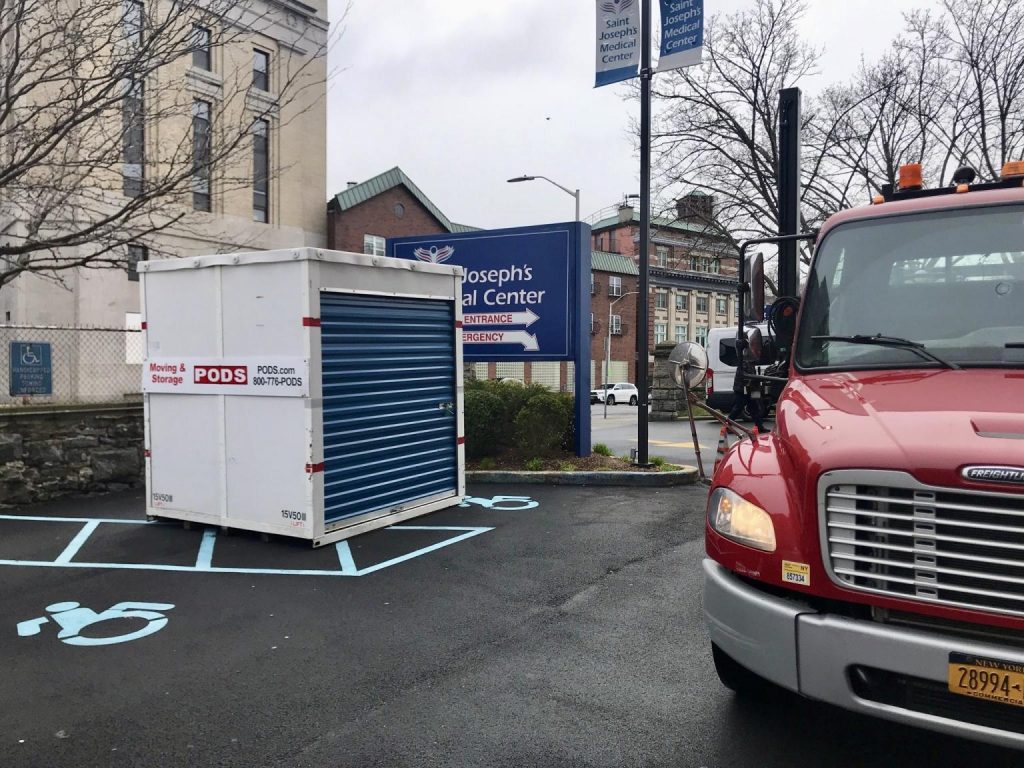
Top Challenges Facing Non-Acute Care — and How PODS Can Help
There's no denying that non-acute care is facing more obstacles than ever before. These healthcare facilities are undergoing huge transitions to stay safe and efficient due to the complications of a pandemic and changing demands in the healthcare industry.
In this article, we outline the top challenges non-acute care faces today and how PODS can provide solutions where it is applicable.
Differences Between Non-Acute & Acute Care
But if you weren't already aware, a non-acute care facility serves patients for ongoing and long-term health treatment — not any urgent or emergency treatment. These are places that facilitate that support to enhance a patient's daily health.
On the other hand, an acute care facility is a place where patients receive immediate and short-term treatment for an injury or brief period of illness. A hospital is the best example of an acute care facility.
Popular examples of non-acute care settings are the following:
- Hospice
- Outpatient clinics
- Physical therapy
- Surgery centers
- Physician clinics
- Home health
- Resident care communities
Because non-acute care facilities are more specialized and have smaller-scale operations compared to hospitals, they have to manage their processes much differently.
Supply Chain Stress
Unlike hospitals, non-acute care is fragmented and such facilities often seek multiple vendors to get supplies. The downside is that having a marketplace approach for obtaining supply can mean that goods don't always arrive together and on schedule.
If shipment delays from vendors are a frequent problem, you can always seek an outside provider to handle the shipping and distribution — like PODS. Our containers are portable and can be moved while fully loaded supply.

Keep in mind too that PODS transport logistics solutions include features such as the ability to stagger supply shipments, guaranteed delivery dates, and scheduling changes up to the night before delivery.
Safety During COVID
All healthcare providers had to continue serving patients and keep staff safe in the midst of the COVID-19 pandemic. Many non-acute care facilities had to make expensive modifications to their buildings and patient areas to reduce the risk of virus infection.
Here are a few changes and additions many health care centers had to make to protect patients:
- Installation of air filtration systems
- Safety screen partitions for social distancing
- Modular and pop-up offices
- Outdoor waiting rooms and treatment areas
- Temperature check stations
- Individual patient treatment units
- Requiring patients to wear PPE
- Reduced or limited scheduling

| Need to create a COVID-safe treatment area? Check out how one urgent care center created pop-up testing facilities inside PODS containers in this case study. |
For staff members, PPE and additional sanitization practices had to be implemented to reduce the chances of infection. Staff members at many non-acute facilities also began working from home using telehealth technology since it could be a safer medium for staff and patients to meet.
Incorporating Telehealth
Telehealth technology was rapidly adopted during the pandemic, especially since it was vetted by the CDC and other leading authorities as a way to provide essential health services. This allowed many of the non-acute workforce to do their jobs remotely. However, providing staff adequate supplies and technology for at-home workspaces was undoubtedly costly.

As the pandemic wanes, more workers will likely continue working remotely. It is expected that non-acute care providers will eventually downsize their facilities as fewer staff members physically work on-site. Containers from PODS are ideal for offices when downsizing since they need a way to store leftover furniture, equipment, and supplies.
Other Top Issues
Among the other big issues affecting non-acute care are receiving timely payments from patients, and finding qualified employees. Both problems are increasingly becoming large pain points for non-acute care because challenges in those areas heavily impact their bottom line.
Unlike hospitals, non-acute care settings are smaller and have leaner budgets. Optimizing operations and reducing costs in any way can help. For moving and storage demands, non-acute facilities can keep spending optimal by using PODS. That way, more resources can be reallocated to resolve payment and staffing issues.
PODS Solutions for Non-Acute Care Facilities
Do these challenges resonate with you and your facility? At PODS, we offer moving and storage services that empower non-acute care facilities to overcome them. Learn more about our solutions for the healthcare industry.
[maxbutton id="3"]
RELATED ARTICLE: Here's How Storage Containers Can Maximize Vaccine Distribution Plans
Comments
Leave a Comment
Your email address will not be published. Required fields are marked *
